It kind of looks like a "reverse" dust mote.
Is there any chance that this is the centre ring on the Primary Mirror?
|
You cannot like this item. Reason: "ANONYMOUS".
You cannot remove your like from this item.
Editing a post is only allowed within 24 hours after creating it.
You cannot Like this post because the topic is closed.
Copy the URL below to share a direct link to this post.
This post cannot be edited using the classic forums editor.
To edit this post, please enable the "New forums experience" in your settings.
Is that image without calibration and without a filter of any kind?
|
You cannot like this item. Reason: "ANONYMOUS".
You cannot remove your like from this item.
Editing a post is only allowed within 24 hours after creating it.
You cannot Like this post because the topic is closed.
Copy the URL below to share a direct link to this post.
This post cannot be edited using the classic forums editor.
To edit this post, please enable the "New forums experience" in your settings.
yes - ONLY the camera - attached to the Focuser - 300 sec. exposure.
Directly into Pixinsight - Graxpert and STF Autostretch Boosted.
Nothing else.
|
You cannot like this item. Reason: "ANONYMOUS".
You cannot remove your like from this item.
Editing a post is only allowed within 24 hours after creating it.
You cannot Like this post because the topic is closed.
Copy the URL below to share a direct link to this post.
This post cannot be edited using the classic forums editor.
To edit this post, please enable the "New forums experience" in your settings.
Regular STF Autostretch 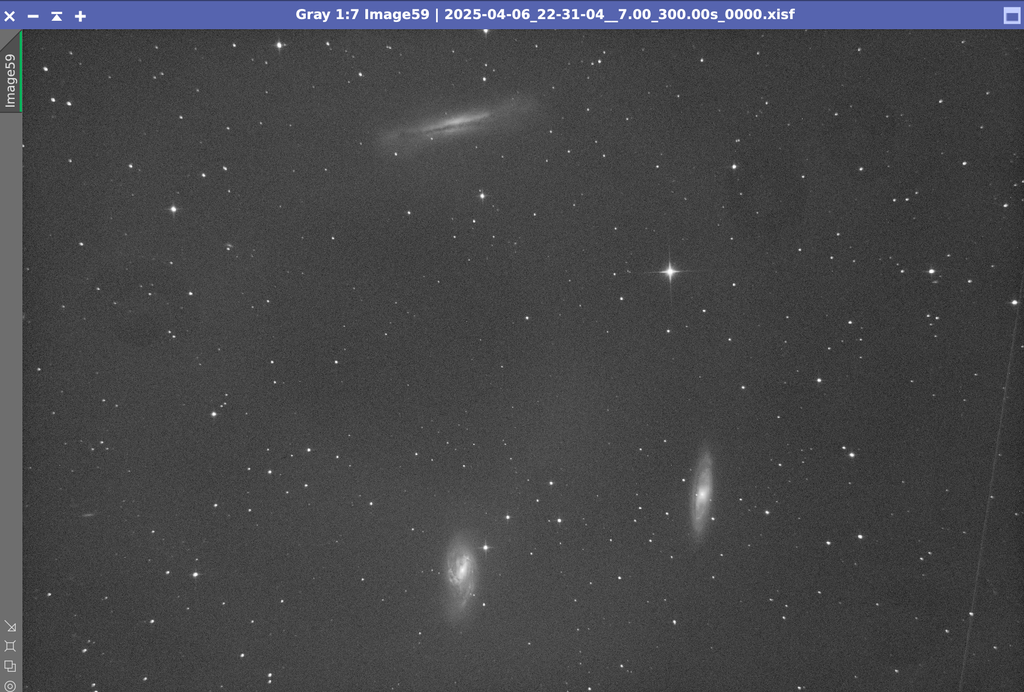 |
You cannot like this item. Reason: "ANONYMOUS".
You cannot remove your like from this item.
Editing a post is only allowed within 24 hours after creating it.
You cannot Like this post because the topic is closed.
Copy the URL below to share a direct link to this post.
This post cannot be edited using the classic forums editor.
To edit this post, please enable the "New forums experience" in your settings.
Ok, IMO, this has to be internal reflections from the focal plane forward. Inside the focuser, tube surfaces, check everything from the entrance to the OTA inward. I've not had this problem but often times, just applying a large square of flocking material opposite the focuser can do wonders. I'd also look at the sides of the secondary holder, the secondary sides and edges and anything around the mirror cell, masks or whatever you have down there. Also make sure that the rear of the OTA is absolutely light tight. Just cover it with foil for a quick check.
|
You cannot like this item. Reason: "ANONYMOUS".
You cannot remove your like from this item.
Editing a post is only allowed within 24 hours after creating it.
You cannot Like this post because the topic is closed.
Copy the URL below to share a direct link to this post.
This post cannot be edited using the classic forums editor.
To edit this post, please enable the "New forums experience" in your settings.
….also, the fact that I can see dust motes is weird but it might not be related. Still, make sure that the camera window and secondary are clean.
|
You cannot like this item. Reason: "ANONYMOUS".
You cannot remove your like from this item.
Editing a post is only allowed within 24 hours after creating it.
You cannot Like this post because the topic is closed.
Copy the URL below to share a direct link to this post.
This post cannot be edited using the classic forums editor.
To edit this post, please enable the "New forums experience" in your settings.
Yeah - I am reading old thread on cloudy nights. This one seems particular interesting - https://www.cloudynights.com/topic/826398-newtonian-reflector-flats/ (I am NOT alone with this problem  ) I am going to either paint or flock the sides of my secondary (that is currently my main suspect) I have gone over the entire OTA with a brigt flashlight - and I cannot find any leaks. The rear of my OTA is covered - been there done that  The entire inner tube has been flocked as well. Everything outside has been covered with multiple layers of duct tape.
|
You cannot like this item. Reason: "ANONYMOUS".
You cannot remove your like from this item.
Editing a post is only allowed within 24 hours after creating it.
You cannot Like this post because the topic is closed.
Copy the URL below to share a direct link to this post.
This post cannot be edited using the classic forums editor.
To edit this post, please enable the "New forums experience" in your settings.
What you see is a ghost image off side of the exit pupil of the system, nothing like the issue you had before which I am pretty sure is down to the reducer/corrector. Blackening the side of the secondary is a possible strategy but the size of the exit pupil image should give an idea where the issue stems from.
|
You cannot like this item. Reason: "ANONYMOUS".
You cannot remove your like from this item.
Editing a post is only allowed within 24 hours after creating it.
You cannot Like this post because the topic is closed.
Copy the URL below to share a direct link to this post.
This post cannot be edited using the classic forums editor.
To edit this post, please enable the "New forums experience" in your settings.
As I understand it an exit pupil is "only" something that is only relevant when a "normal" lens or eyepiece is attached to scope?
I can't see how I can have a ghost image of an exit pupil, when there are no optical elements at all in the lightpath.
There is just the Primary and Secondary mirror, and light is focused directly on the sensor in the camera, so I can't understand how the concept of an exit pupil is relevant in this setup?
|
You cannot like this item. Reason: "ANONYMOUS".
You cannot remove your like from this item.
Editing a post is only allowed within 24 hours after creating it.
You cannot Like this post because the topic is closed.
Copy the URL below to share a direct link to this post.
This post cannot be edited using the classic forums editor.
To edit this post, please enable the "New forums experience" in your settings.
That was a looooog thread! It's sounding like everything but the kitchen sink at this point but it also looks like you're not alone. I was just looking at the sensor area of my ZWO 585. those surfaces around the sensor certainly aren't blacked out. There's even a white sticker right next to one side of the sensor not to mention the shiny gold wiring and contacts all around the edge of the sensor. Not saying it's the cause but I can see these things having an effect in certain situations.
|
You cannot like this item. Reason: "ANONYMOUS".
You cannot remove your like from this item.
Editing a post is only allowed within 24 hours after creating it.
You cannot Like this post because the topic is closed.
Copy the URL below to share a direct link to this post.
This post cannot be edited using the classic forums editor.
To edit this post, please enable the "New forums experience" in your settings.
Christian Bennich:
As I understand it an exit pupil is "only" something that is only relevant when a "normal" lens or eyepiece is attached to scope?
I can't see how I can have a ghost image of an exit pupil, when there are no optical elements at all in the lightpath.
There is just the Primary and Secondary mirror, and light is focused directly on the sensor in the camera, so I can't understand how the concept of an exit pupil is relevant in this setup? *The exit pupil of an optical system has nothing to do whether the system is afocal or focal, as it is the case here. The exit pupil is just the last surface (real or virtual) where the rays converging to form an image (alternatively to converge to a focus point) are formed. In the case of a newtonian that is the primary surface.
|
You cannot like this item. Reason: "ANONYMOUS".
You cannot remove your like from this item.
Editing a post is only allowed within 24 hours after creating it.
You cannot Like this post because the topic is closed.
Copy the URL below to share a direct link to this post.
This post cannot be edited using the classic forums editor.
To edit this post, please enable the "New forums experience" in your settings.
andrea tasselli:
Christian Bennich:
As I understand it an exit pupil is "only" something that is only relevant when a "normal" lens or eyepiece is attached to scope?
I can't see how I can have a ghost image of an exit pupil, when there are no optical elements at all in the lightpath.
There is just the Primary and Secondary mirror, and light is focused directly on the sensor in the camera, so I can't understand how the concept of an exit pupil is relevant in this setup?
*The exit pupil of an optical system has nothing to do whether the system is afocal or focal, as it is the case here. The exit pupil is just the last surface (real or virtual) where the rays converging to form an image (alternatively to converge to a focus point) are formed. In the case of a newtonian that is the primary surface. *thank you for clarifying 👍
|
You cannot like this item. Reason: "ANONYMOUS".
You cannot remove your like from this item.
Editing a post is only allowed within 24 hours after creating it.
You cannot Like this post because the topic is closed.
Copy the URL below to share a direct link to this post.
This post cannot be edited using the classic forums editor.
To edit this post, please enable the "New forums experience" in your settings.
Still no progress......  I have painted my secondary mirror edge etc. with Musou black paint - nothing changed. I have painted the edges and inside of my focuser tube with Musou black paint - nothing changed. I have flocked the area around the focuser tube - so that the tube is now almost perfectly enclosed inside the OTA - and I have a device around the focuser on the ourside as well - shielding against potential light leaks - nothing changed. I have re-collimated my scope - as I wanted to check if doing that changed anything. (Nothing changed) I have tried moving the primary mirror significantly, by tweaking 1 of the collimation screws. (Nothing changed) I have seen no change in how this looks in my light frames. I started looking into my Flat frames as well - and can see the same structure there. This had me wondering, WHY it is not properly calibrated out when it also exist in my flat frames. Yesterday, I tested with 2 different cameras, and different image train set up's on those cameras. Which are here: Camera 1 - with field flattener, filterwheel (L filter) etc. 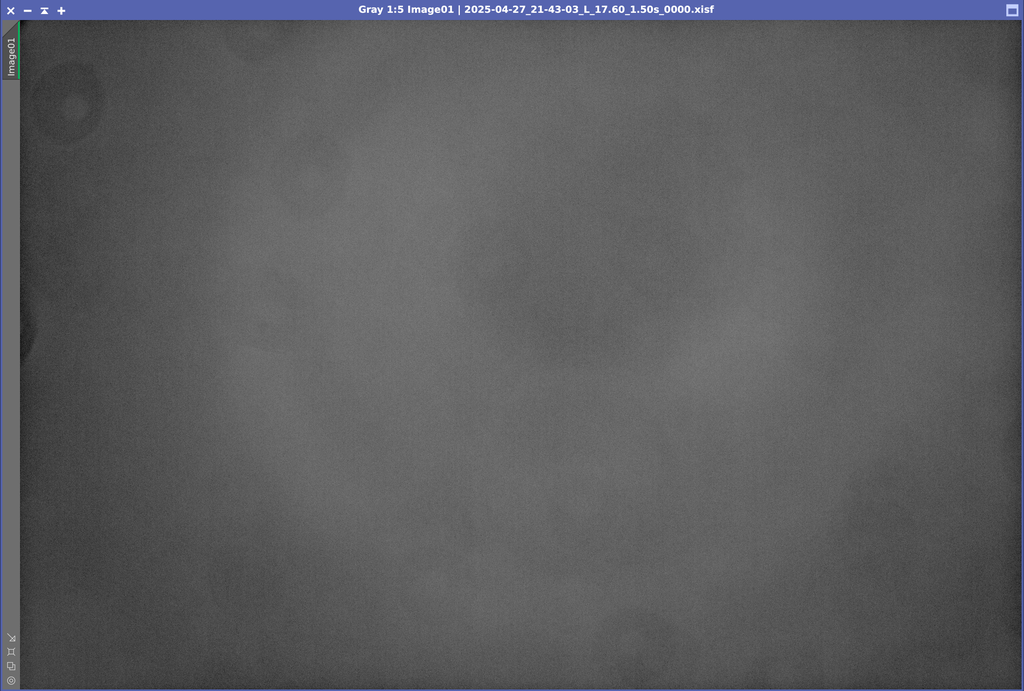 Camera 2 - with nothing BUT a Starizona 0,75 reducer. 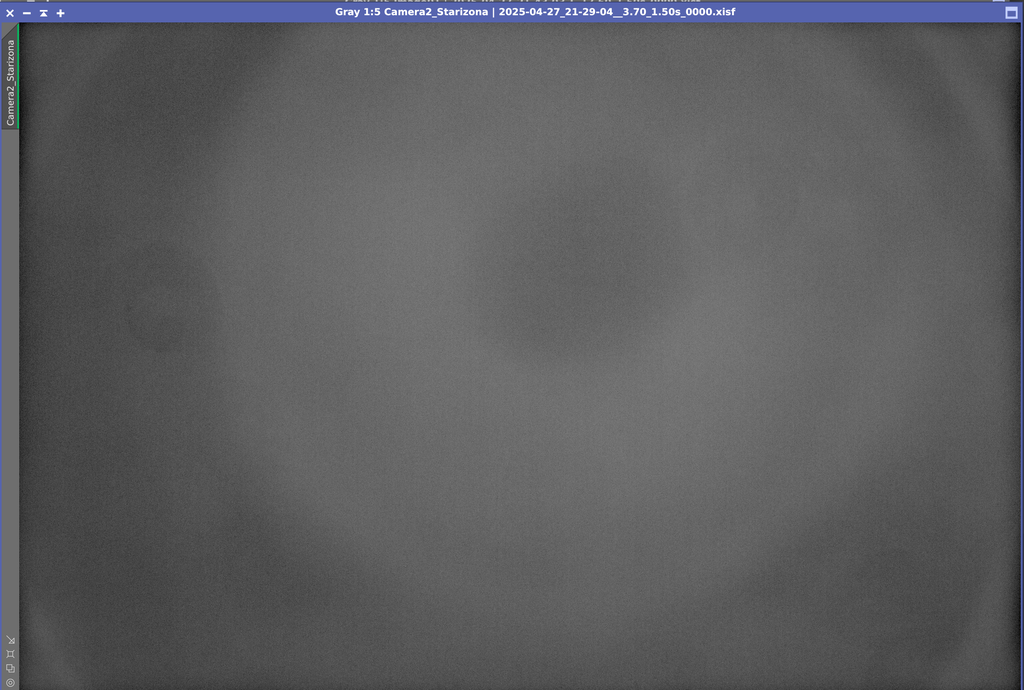 Camera 2 with nothing in front of the sensor. 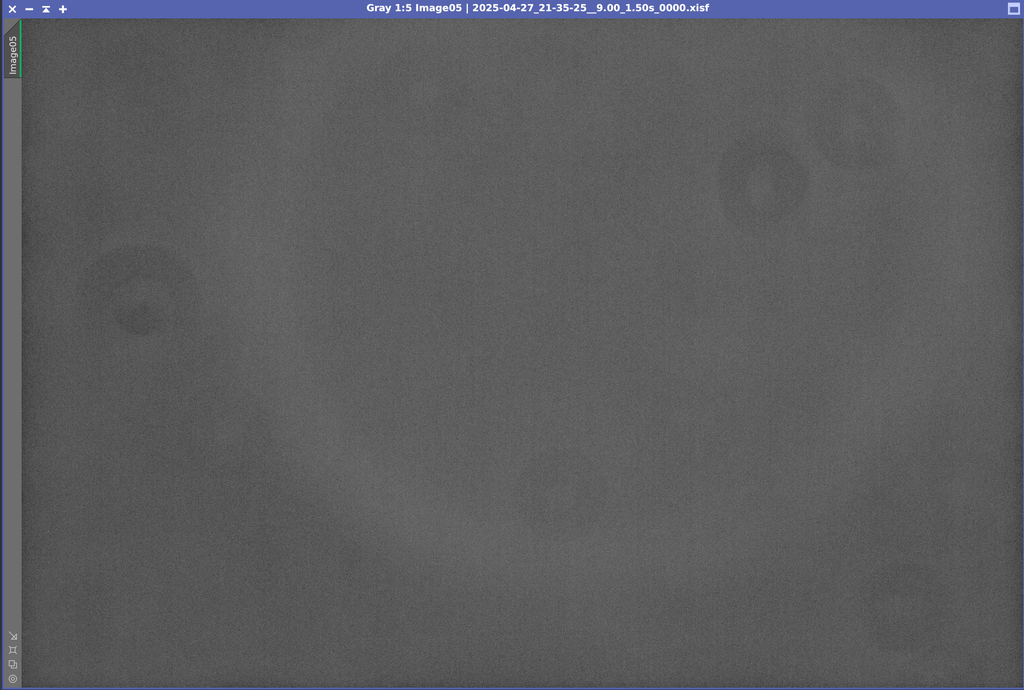 I did not focus the camera on image 2 or 3 - as I was inside my closed astro shed with the roof on, to make sure that I had no light coming, except from the flat panel on top of my scope. Could it be, that the shape, is a reflection of the little center donut on the primary mirror? @andrea tasselli - you mentioned at one point, the exit pupil. Could you please elaborate a bit further on this - I am not entirely sure what to look for? @Tony Gondola - I have also been looking at the sensor on my ASI2600MM - I can see the wiring, and the white sticker to the side of the sensor. Wouldn't it be strange if I was the only on suffering from these reflections?
|
You cannot like this item. Reason: "ANONYMOUS".
You cannot remove your like from this item.
Editing a post is only allowed within 24 hours after creating it.
You cannot Like this post because the topic is closed.
Copy the URL below to share a direct link to this post.
This post cannot be edited using the classic forums editor.
To edit this post, please enable the "New forums experience" in your settings.
Christian Bennich:
Could it be, that the shape, is a reflection of the little center donut on the primary mirror?
@andrea tasselli - you mentioned at one point, the exit pupil. Could you please elaborate a bit further on this - I am not entirely sure what to look for? *Rest assured that no such thing exists, the donut is in the shadow of the secondary and, if you were to mark the offset center of the secondary, that would be still in the secondary's own shadow (using a point as marker). The last image is the more interesting one. It would be helpful to see whether that circle would stay the same as when the scope is focused. Note that circle is also present in the 2nd flat, but at the very outer edge, but not on the first. Where if not for this feature the flat would pass the acceptability criteria. The last one, that is. As far as the image of the exit pupil is the image of the primary mirror as far as a newton is concerned, which you can see in the 1st and the 2nd flat. Have you tried with sky flats (or dusk flats) with the scope in focus? I'm pretty sure the main issue is with the CC, as shown by the absence of the exit pupil image in the first and second flat, taken with the CC in place.
|
You cannot like this item. Reason: "ANONYMOUS".
You cannot remove your like from this item.
Editing a post is only allowed within 24 hours after creating it.
You cannot Like this post because the topic is closed.
Copy the URL below to share a direct link to this post.
This post cannot be edited using the classic forums editor.
To edit this post, please enable the "New forums experience" in your settings.
Awesome input @andrea tasselli - I am waiting for the sun to set here in DK and hopefully the skies will clear up a bit later. I think I now realized what you meant with the exit pupil. If I understand you correctly - then the exit pupil would be the "last piece of glass" in the image train? So, what you are pointing to, would be that some reflections or something comes from the the exit pupil in some way?
|
You cannot like this item. Reason: "ANONYMOUS".
You cannot remove your like from this item.
Editing a post is only allowed within 24 hours after creating it.
You cannot Like this post because the topic is closed.
Copy the URL below to share a direct link to this post.
This post cannot be edited using the classic forums editor.
To edit this post, please enable the "New forums experience" in your settings.
Christian Bennich:
If I understand you correctly - then the exit pupil would be the "last piece of glass" in the image train? *Technically is the last surface where the "image" is formed, which for a newtonian is actually the primary. And, yes, you have a reflection (which can also be a ghost image created by a lens) which is projected onto the the image plane (the sensor). And If I am corrected, you may have more than one. That's why I'm curious on how a sky flat would perform, with just the camera and the scope. In focus.
|
You cannot like this item. Reason: "ANONYMOUS".
You cannot remove your like from this item.
Editing a post is only allowed within 24 hours after creating it.
You cannot Like this post because the topic is closed.
Copy the URL below to share a direct link to this post.
This post cannot be edited using the classic forums editor.
To edit this post, please enable the "New forums experience" in your settings.
Got it - focus tonight and “real” flats and light frames with just the camera.
Sky flats tomorrow morning.
|
You cannot like this item. Reason: "ANONYMOUS".
You cannot remove your like from this item.
Editing a post is only allowed within 24 hours after creating it.
You cannot Like this post because the topic is closed.
Copy the URL below to share a direct link to this post.
This post cannot be edited using the classic forums editor.
To edit this post, please enable the "New forums experience" in your settings.
Here is a flat frame in focus - JUST the camera - nothing else. 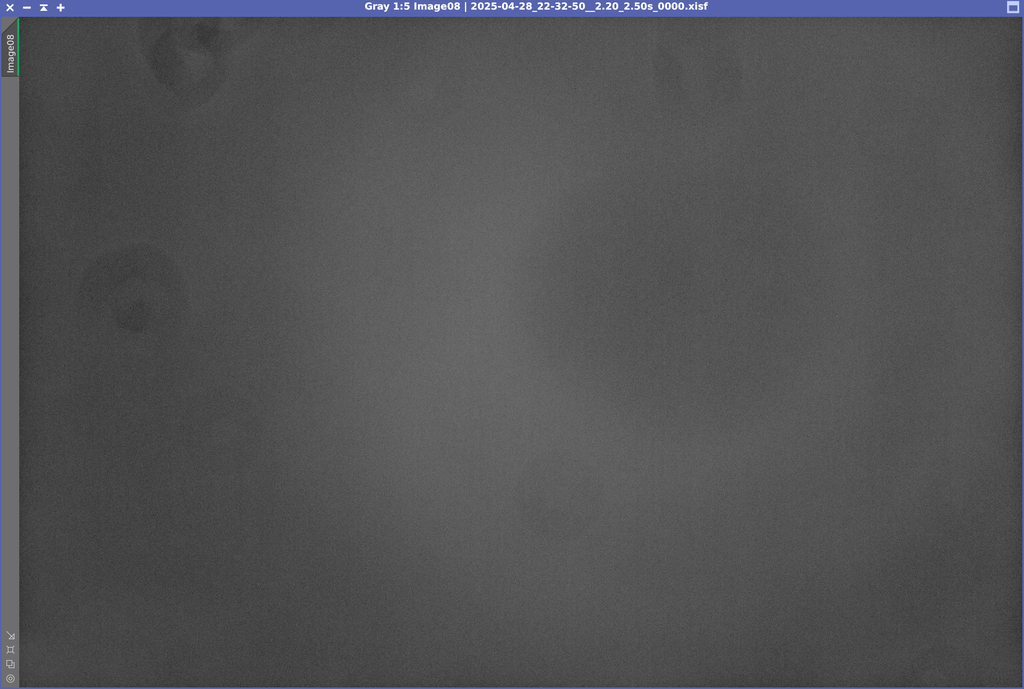 |
You cannot like this item. Reason: "ANONYMOUS".
You cannot remove your like from this item.
Editing a post is only allowed within 24 hours after creating it.
You cannot Like this post because the topic is closed.
Copy the URL below to share a direct link to this post.
This post cannot be edited using the classic forums editor.
To edit this post, please enable the "New forums experience" in your settings.
Turning the camera 90 degrees to the right - trying not to loose focus...too much  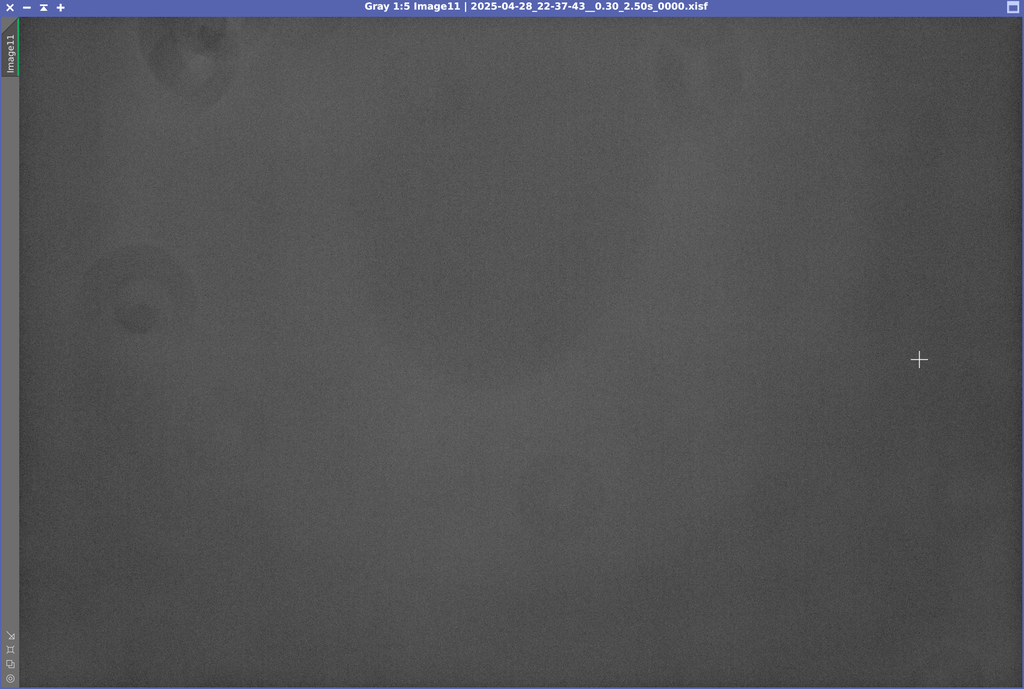 I guess it's not the CC or the Starizona that's causing the shadow/artefact.
|
You cannot like this item. Reason: "ANONYMOUS".
You cannot remove your like from this item.
Editing a post is only allowed within 24 hours after creating it.
You cannot Like this post because the topic is closed.
Copy the URL below to share a direct link to this post.
This post cannot be edited using the classic forums editor.
To edit this post, please enable the "New forums experience" in your settings.
Well, at least we can rule out the other hardware. I'll be waiting with the sky flats with bated breadth… They need to be taken before sun-up and with the scope pointing away from the NE. Zenith is fine.
|
You cannot like this item. Reason: "ANONYMOUS".
You cannot remove your like from this item.
Editing a post is only allowed within 24 hours after creating it.
You cannot Like this post because the topic is closed.
Copy the URL below to share a direct link to this post.
This post cannot be edited using the classic forums editor.
To edit this post, please enable the "New forums experience" in your settings.
Without reading the whole discussion - just the title and looking at your image, that is flat frame over/undercorrection. Ensure your flats are achieving an optimal mean ADU count.
|
You cannot like this item. Reason: "ANONYMOUS".
You cannot remove your like from this item.
Editing a post is only allowed within 24 hours after creating it.
You cannot Like this post because the topic is closed.
Copy the URL below to share a direct link to this post.
This post cannot be edited using the classic forums editor.
To edit this post, please enable the "New forums experience" in your settings.
Thank you @Alex Nicholas - I am using NINA’s flat wizard. Have tried 20%, 30% and 40% of “Histogram mean target”, with a 10% mean tolerance. Neither has made any apparent difference. Which settings do you target?
|
You cannot like this item. Reason: "ANONYMOUS".
You cannot remove your like from this item.
Editing a post is only allowed within 24 hours after creating it.
You cannot Like this post because the topic is closed.
Copy the URL below to share a direct link to this post.
This post cannot be edited using the classic forums editor.
To edit this post, please enable the "New forums experience" in your settings.
Christian Bennich:
Thank you @Alex Nicholas - I am using NINA’s flat wizard.
Have tried 20%, 30% and 40% of “Histogram mean target”, with a 10% mean tolerance.
Neither has made any apparent difference.
Which settings do you target? Using NINA's flat wizard, I would regularly target 40% histogram mean with a 10% mean tolerance too. That's always been effective for me... however, what could be an issue here (now that I've taken the time to read more about the situation) is that there may be some reflection somewhere that is being caused by your flat panel that occurs worse in flats than it does in light frames, thus, resulting in over-correction. As has been mentioned, attempt sky flats rather than a flat panel that literally shines a bright light down your tube.. This may alleviate the situation... If it does, you could try to attenuate the light source using something to filter the light so its more diffuse... Annoying to have to use T-Shirt + flat panel, but, as they say, if it seems stupid but works, it's not stupid.
|
You cannot like this item. Reason: "ANONYMOUS".
You cannot remove your like from this item.
Editing a post is only allowed within 24 hours after creating it.
You cannot Like this post because the topic is closed.
Copy the URL below to share a direct link to this post.
This post cannot be edited using the classic forums editor.
To edit this post, please enable the "New forums experience" in your settings.
@andrea tasselli - you have to hold your breath a bit longer  Something went wrong in my sequence - so no Skyflats this morning. Will try again tomorrow morning.
|
You cannot like this item. Reason: "ANONYMOUS".
You cannot remove your like from this item.
Editing a post is only allowed within 24 hours after creating it.
You cannot Like this post because the topic is closed.
Copy the URL below to share a direct link to this post.
This post cannot be edited using the classic forums editor.
To edit this post, please enable the "New forums experience" in your settings.
I am following with interest as i have very similar issues sometimes with a 150/750 newtonian. The rings are not showing regularly in my case, even when imaging in the same spot and the same region of sky. I noticed the following: If i take flats before imaging (flat field box) with the scope pointed in the same general direction as in the imaging run, the rings are calibrated out quite good and i have an ok and even background. Small shifts of the primary depending on orientation could lead to inconsistent flats? Maybe coincidence? I did not tackle this systematically so far. This does not solve the root cause unfortunately but worked for me in the past.
BTW, i use a GPU corrector with my scope, due shield at the front, black cap on the back, blackened the sides of the secondary.
|
You cannot like this item. Reason: "ANONYMOUS".
You cannot remove your like from this item.
Editing a post is only allowed within 24 hours after creating it.
You cannot Like this post because the topic is closed.
Copy the URL below to share a direct link to this post.
This post cannot be edited using the classic forums editor.
To edit this post, please enable the "New forums experience" in your settings.








